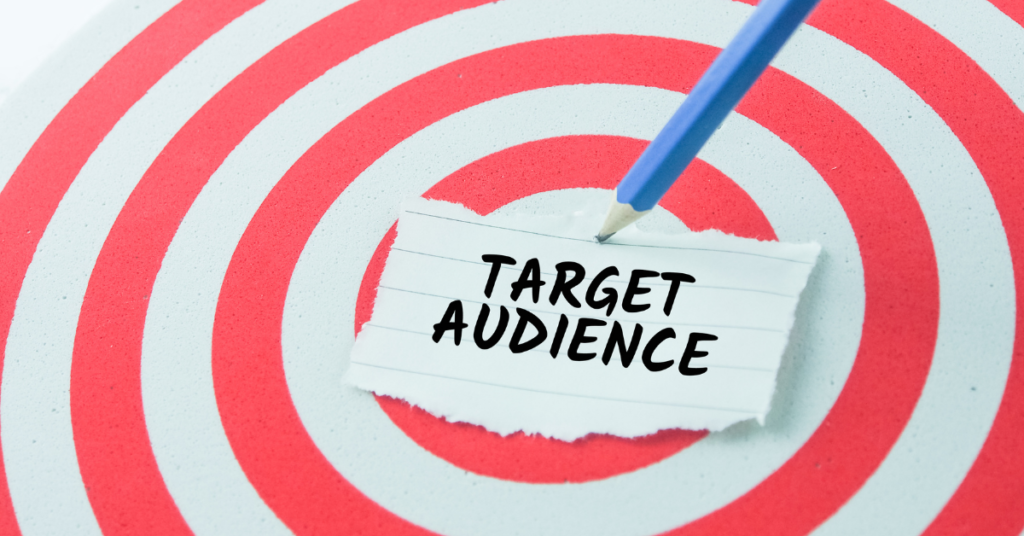Understanding and defining your target audience is a critical step towards crafting effective marketing strategies. A target audience represents the specific group of individuals or organisations that a business aims to reach with its products, services, or messages. This article will explore the intricacies of defining a target audience, discussing the importance of this process, the key ways to identify a target audience, the distinctions between target market and target audience, the various types of target audiences, and practical methods to pinpoint and connect with your ideal audience.

Understanding Target Audience: The Essence of Marketing Precision
At its core, a target audience is the demographic, psychographic, or behavioural group that is most likely to be interested in and benefit from what your business has to offer. The concept goes beyond basic demographics like age and gender, delving into the specific needs, preferences, and behaviours of the individuals who are most likely to engage with your brand. By defining your target audience, you tailor your marketing efforts to speak directly to the interests and concerns of those who are most likely to become customers, ensuring a more efficient and impactful use of resources.
Key Ways to Identify a Target Audience
Identifying a target audience involves a strategic analysis of various factors. Here are four key ways to define and understand your target audience:
Demographic Analysis: Start by examining basic demographic information such as age, gender, income level, education, and geographic location. Understanding these fundamental characteristics provides a foundational understanding of who your potential customers might be.
Psychographic Profiling: Dive deeper into the psychographics of your audience. This includes their interests, hobbies, lifestyles, values, and attitudes. What are their pain points, and what solutions are they seeking? By understanding the psychological aspects of your audience, you can create marketing messages that resonate on a deeper level.
Behavioural Insights: Analyse the behaviours of your potential customers. This involves understanding their buying patterns, product usage, brand interactions, and decision-making processes. Behavioural insights provide valuable information on how your audience interacts with products or services similar to yours.
Technological Proficiency: In the digital age, leveraging technology is crucial. Utilise analytics tools, social media insights, and other digital platforms to gather data on your audience’s online behaviour. This can include the websites they visit, the social media platforms they engage with, and the content they consume. Technological proficiency allows for a more nuanced understanding of your audience’s digital footprint.

Target Market vs. Target Audience: Clarifying the Distinctions
While the terms “target market” and “target audience” are often used interchangeably, they have distinct meanings. A target market refers to the broader group of potential customers that a business aims to reach with its products or services. It encompasses a larger segment of the population and may include multiple target audiences. In contrast, a target audience is a more specific subset within the target market. It represents a focused group with shared characteristics, making it the primary focus of a particular marketing campaign.
Understanding this difference is crucial for effective marketing strategies. Target markets provide the big picture, guiding overall business goals, while target audiences refine the approach, ensuring that marketing messages resonate with specific groups within the broader market.
Types of Target Audience
Target audiences can vary significantly based on factors such as industry, product type, and marketing goals. Here are some common types of target audiences:
Demographic Segments: This includes groups defined by age, gender, income, education, marital status, and other quantifiable characteristics. For example, a skincare brand might target women aged 25-40 with specific income levels.
Geographic Segments: Businesses may target audiences based on location, whether it’s a local, regional, national, or international focus. A local restaurant, for instance, might target residents within a specific radius.
Psychographic Profiles: This involves targeting based on lifestyle, interests, values, and attitudes. An eco-friendly brand, for instance, might target individuals who prioritise sustainability and environmental consciousness.
Behavioural Segmentation: Businesses can target audiences based on their behaviours, such as buying patterns, product usage, brand loyalty, and response to marketing messages. An online streaming service might target users who frequently consume content within a specific genre.
B2B vs. B2C: The type of business also influences the target audience. Business-to-Business (B2B) companies target other businesses, while Business-to-Consumer (B2C) companies target individual consumers.

How to Find Your Target Audience
Identifying your target audience is a strategic process that requires a combination of research, analysis, and intuition. Here are steps to guide you in finding your target audience:
Conduct Market Research: Invest time in comprehensive market research to understand the broader market trends, competitor landscapes, and potential customer segments. This foundational step provides insights into the overall market environment.
Analyse Customer Data: If your business has existing customers, analyse their data. Look for patterns in demographics, behaviours, and preferences. This information can serve as a valuable starting point for defining your target audience.
Create Buyer Personas: Develop detailed buyer personas representing your ideal customers. These personas should include demographic information, motivations, challenges, and goals. Personas provide a humanised representation of your target audience, making it easier to tailor marketing efforts.
Utilise Analytics Tools: Leverage analytics tools to gather data on website visitors, social media engagement, and other online interactions. Platforms like Google Analytics, Facebook Insights, and others offer valuable insights into the digital behaviour of your audience.
Seek Feedback: Engage with your existing customers and seek their feedback. Understand why they chose your product or service, what they value, and any pain points they experienced. Customer feedback is a goldmine of information for refining your target audience definition.
Test and Iterate: Marketing strategies are not set in stone. Test different approaches, channels, and messages to see what resonates most with your audience. Use the results to iterate and refine your target audience definition continuously.
Monitor Trends: Stay attuned to industry trends and shifts in consumer behaviour. Markets are dynamic, and staying informed allows you to adapt your strategies to evolving audience needs.
Precision in Pursuit of Success
Defining a target audience is not a one-time task but an ongoing process that evolves with your business and the market. It requires a nuanced understanding of who your potential customers are, what they need, and how they behave. The investment in this process pays off in the precision and effectiveness of your marketing efforts.
In the dynamic and competitive landscape of business, where resources are finite, the ability to pinpoint and connect with the right audience is a strategic advantage. A well-defined target audience ensures that your marketing messages resonate with those most likely to become loyal customers, fostering brand growth and long-term success. It is, indeed, a journey of precision in pursuit of success, where understanding your audience becomes the compass guiding your brand toward sustainable growth and meaningful connections.



